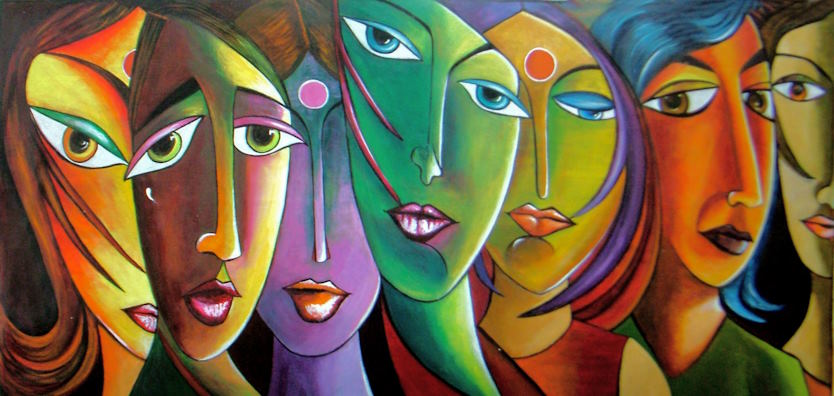
Art has a remarkable ability to transcend the boundaries of language, culture, and time, eliciting a diverse spectrum of emotions that resonate within us. From the vivid strokes of a painting to the rhythmic cadence of a melody, the written words that weave intricate stories to the kinetic energy of dance, art possesses an unparalleled capacity to stir our innermost feelings. Delving into the rich tapestry of human creativity, this article embarks on a journey of exploration, seeking to unravel the intricate connection between art and emotions. By examining the myriad ways in which art evokes, communicates, and reflects our emotional experiences, we aim to shed light on the profound impact that artistic expressions wield on our lives, identities, and the collective human psyche.
The Emotional Impact of Visual Arts
Colors, Shapes, and Composition: Eliciting Profound Emotions
The interplay of colors, shapes, and composition within a piece of visual art holds a remarkable power to evoke emotions that words often struggle to convey. The warm embrace of vibrant reds can ignite feelings of passion and intensity, while serene blues and soft pastels can invoke calm and tranquility. Sharp angles and jagged lines might create tension and unease, while gentle curves and flowing forms can soothe and invite contemplation. The deliberate arrangement of these elements within a frame can guide our gaze and manipulate our emotional journey through the artwork. Such artistic decisions demonstrate how visual cues speak directly to our emotions, forming a connection that transcends the literal imagery.
Case Studies: The Emotional Narratives of Iconic Paintings
Examining the emotional resonance of famous paintings offers a glimpse into the profound impact art can have on our psyche. Vincent van Gogh’s “Starry Night” envelops viewers in a swirling whirlpool of vibrant colors, conveying both the artist’s turbulent emotions and the enchanting beauty of the cosmos. Edvard Munch’s “The Scream” distills existential anxiety into a haunting visage, inviting us to confront our innermost fears. Through these case studies and many more, we witness how artists use their palettes as emotional palettes, imprinting their feelings onto the canvas and forging an enduring connection with those who gaze upon their creations.

Performing Arts: Embodying Emotions
Physicality and Emotional Expression in Dance
Dance, with its fluid movements and dynamic gestures, serves as a powerful vehicle for conveying emotions that transcend language. The physicality of dance enables artists to embody emotions, allowing their bodies to speak volumes beyond words. From the graceful elegance of ballet to the raw intensity of contemporary dance, performers communicate joy, sorrow, passion, and longing through their every motion. The synchronized choreography of a group can evoke a sense of unity, while a solo dancer’s expressive performance can resonate deeply with individual experiences.
The Theatrical Canvas: Acting and Theater’s Emotional Spectrum
Theater and acting provide a canvas on which the broad spectrum of human emotions is painted with vivid strokes. Actors immerse themselves in characters, drawing from their own emotional reservoirs to authentically convey feelings of love, rage, despair, and ecstasy. The stage becomes a realm where empathy flourishes, as audiences witness the very essence of human emotion brought to life. Theater’s unique blend of dialogue, expression, and body language allows for nuanced emotional storytelling, enabling audiences to connect intimately with characters and their experiences.
Art in Therapy and Psychology
 Harnessing Creativity for Emotional Exploration: Art Therapy
Harnessing Creativity for Emotional Exploration: Art Therapy
Art therapy stands as a testament to the innate connection between creativity and emotional well-being. Through various artistic mediums, individuals are encouraged to express feelings that might elude verbalization. Painting, drawing, sculpting, and other forms of creative expression become conduits for exploring the complex landscape of emotions. In a therapeutic context, art provides a safe and nonjudgmental space for individuals to delve into their subconscious, uncovering hidden emotions and experiences that contribute to their psychological landscape.
The Psychology Behind Art’s Emotional Impact
Art’s ability to stimulate emotional responses finds its roots in psychological theories that illuminate the intersection of perception, cognition, and emotion. Gestalt psychology, for instance, emphasizes how the arrangement of visual elements within an artwork influences emotional interpretation. The psychoanalytic perspective delves into the symbolic meaning behind artistic choices, revealing insights into the artist’s psyche. These theories highlight how art engages both the conscious and unconscious mind, fostering emotional connections that resonate deeply.
